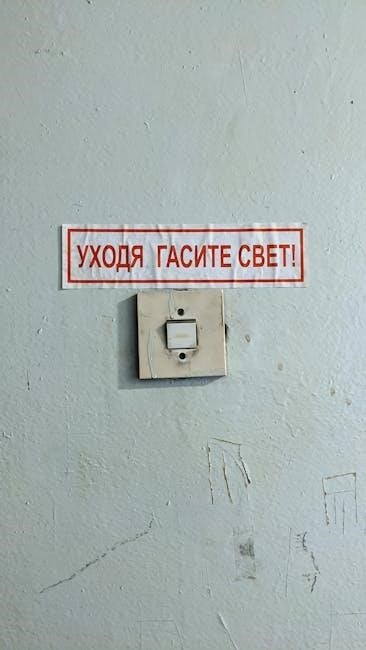
A manual transfer switch is a critical electrical device enabling safe power source switching during outages. Ideal for residential and commercial use, a 50-amp model ensures reliable power distribution.
What is a Manual Transfer Switch?
A manual transfer switch is an electrical device that allows users to safely switch between two power sources, such as a primary utility supply and a backup generator. Designed for reliability and ease of use, it ensures uninterrupted power during outages. A 50-amp manual transfer switch is specifically built to handle higher power demands, making it suitable for residential and light commercial applications. It typically features a rugged design, multiple circuits, and compatibility with generators up to 12,500 watts. The switch is manually operated, providing a straightforward way to transition power sources while maintaining electrical safety and efficiency.
Importance of Manual Transfer Switches
Manual transfer switches are essential for ensuring power continuity and safety during electrical outages. They allow homeowners and businesses to seamlessly switch to a backup generator, preventing interruptions to critical systems like lighting, heating, and appliances. A 50-amp manual transfer switch is particularly valuable for its ability to handle higher power demands, making it ideal for larger residential and commercial applications. By providing a reliable means to transition between power sources, these switches offer peace of mind and protect against potential damage from power surges or fluctuations. Their pre-wired designs and robust construction ensure ease of use and durability, making them a cost-effective solution for emergency power management.
A 50-amp manual transfer switch offers a reliable power solution for homes and businesses, featuring high power capacity, durable construction, and essential components for safe electrical connections. The 50-amp manual transfer switch is designed to handle substantial power demands, ensuring smooth operation of essential circuits. Rated for 50 amps, it supports up to 12,000 watts at 240 volts, making it suitable for heavy-duty applications. These switches are built with durable materials and robust internal components to maintain consistent performance under load. Compliance with UL standards and NEMA ratings ensures safety and reliability. The pre-wired design simplifies installation, while the weather-resistant enclosure protects against environmental factors. This power capacity is ideal for residential backup systems, providing peace of mind during power outages. Always verify ratings match your generator and electrical needs for optimal functionality. The 50-amp manual transfer switch is crafted with durable materials and a compact, heavy-duty design for reliable performance. Featuring a powder-coated steel cabinet, it ensures rust resistance and long-lasting durability. The NEMA 3R-rated enclosure provides excellent protection against environmental elements, making it suitable for both indoor and outdoor use. Inside, brass terminals and high-quality contacts ensure consistent power flow and minimal resistance. Many models include pre-wired components and clearly labeled wires, simplifying installation. The mechanical interlock prevents simultaneous operation of both power sources, enhancing safety. Customers praise the solid construction and ease of use, making it a reliable choice for backup power systems. A 50-amp manual transfer switch often includes essential accessories to enhance functionality and installation ease. Many models come with a 30-foot generator power cord and a weather-resistant power inlet box, ensuring secure connections. Some units feature a pre-wired design with flexible steel conduit for simplified wire management. Additional components may include a 50-amp mini breaker and a mechanical meter for monitoring power usage. The double-throw switch allows seamless transition between power sources, while terminals are often labeled for easy hookups. These components ensure a comprehensive solution for safe and efficient power management during outages, making installation and operation more straightforward for users. Selecting a 50-amp manual transfer switch involves considering power capacity, compatibility, and safety features. Ensure it matches your generator’s specs and meets electrical codes for reliable performance. When selecting a 50-amp manual transfer switch, consider power capacity, compatibility, and safety features. Ensure it matches your generator’s specs and meets electrical codes for reliable performance. Additionally, evaluate the number of circuits needed, as a 10-circuit switch offers flexibility for multiple appliances. Build quality and durability are crucial, with options like heavy-gauge steel and weather-resistant enclosures. Ease of installation and pre-wired designs can simplify the process. Also, check for UL listing and compliance with National Electric Codes to ensure safety and avoid potential hazards. Brand reputation and customer reviews can provide insights into product reliability and performance. Leading brands in the 50-amp manual transfer switch market include Champion Power Equipment, Reliance Controls, and Generac. Champion’s 201193 model is highly rated for its 10-circuit capability and weather-resistant design. Reliance Controls’ Pro/Tran2 series, such as the A510C, is UL-listed and known for durability. Generac’s HomeLink switches are praised for their ease of use and compliance with National Electric Codes. These brands offer reliable performance, with features like pre-wired designs and heavy-duty construction. Customers often highlight their ease of installation and robust build quality, making them top choices for both residential and commercial applications. Manual transfer switches must meet strict safety standards to ensure reliable operation. They are designed to comply with National Electric Codes and UL certifications, guaranteeing user protection during power transfer. Manual transfer switches must adhere to strict electrical safety standards to ensure safe and reliable operation. They are typically UL listed to UL 1008, meeting requirements for transfer switches used in emergency systems. Compliance with the National Electric Code (NEC) is essential, particularly Article 702, which governs the installation and use of these devices. Proper certification ensures the switch can handle the rated 50-amp capacity without overheating or failing. Manufacturers conduct rigorous testing, including heat rise evaluations, to verify performance and safety under various conditions. Always look for UL certification and compliance with local electrical codes when selecting a manual transfer switch. Proper installation of a 50-amp manual transfer switch is crucial for safe and effective operation. Follow all local electrical codes and manufacturer instructions to ensure compliance. The switch should be installed by a licensed electrician to avoid risks of electrical shock or fire hazards. Once installed, users must regularly test the switch to ensure smooth transitioning between power sources. Always turn off all connected circuits before switching to prevent damage or arcing. Keep the area around the switch clear and ensure it is securely mounted to maintain stability. Regular visual inspections and maintenance are recommended to uphold performance and safety standards. A licensed electrician should handle the installation of a 50-amp manual transfer switch, ensuring compliance with NEC standards and safe power transition capabilities. Before installing a 50-amp manual transfer switch, ensure the site meets NEC standards and local electrical codes. Verify the switch’s compatibility with your generator and electrical panel. Assess the load requirements to avoid overload. Prepare necessary tools and materials, including wire and conduit. Ensure the area is clear and safe for installation. If unsure, consult a licensed electrician to guarantee compliance and safety. Proper planning ensures a smooth and efficient installation process. Always follow the manufacturer’s guidelines for specific requirements. Begin by shutting off the main power supply to ensure safety. Locate the ideal installation spot for the 50-amp manual transfer switch, typically near the electrical panel. Mount the switch securely, ensuring it is level and accessible. Connect the wires according to the manufacturer’s wiring diagram, matching the load circuits. Install the power inlet box outdoors, ensuring it is weather-resistant. Run the generator power cord between the inlet box and the switch, securing it properly. Test the switch by transferring power to the generator and back, verifying all circuits function correctly. Follow all safety guidelines and manufacturer instructions for a successful installation. Always double-check connections before restoring power. After installation, conduct a thorough inspection of the 50-amp manual transfer switch to ensure all connections are secure and properly labeled. Verify that the power inlet box is correctly installed and sealed to prevent weather damage. Test the switch by transferring power from the main supply to the generator and back, observing the transition’s smoothness. Check for any signs of overheating or unusual noise. Ensure all circuits are functioning as intended and that the generator power cord is safely connected. Review the installation against local electrical codes and manufacturer guidelines to confirm compliance. Finally, document the setup for future reference and schedule routine maintenance to maintain reliability. Always prioritize safety during these checks; Regular maintenance of a 50-amp manual transfer switch involves inspecting contacts, tightening connections, and ensuring proper lubrication. Troubleshooting common issues like faulty switches or tripped breakers promptly prevents power disruptions. Regular maintenance is essential for extending the life of a 50-amp manual transfer switch. Users should inspect the device for wear, clean dust and dirt, and ensure all connections are tight. Lubricate moving parts to maintain smooth operation. Check circuit breakers and verify proper wire sizing to prevent overheating. Schedule annual professional inspections to address hidden issues. Refer to manufacturer guidelines for specific recommendations, such as UL standards compliance. Proper care ensures reliable performance during power outages and minimizes risks of electrical hazards. Always follow safety protocols when handling electrical components. Common issues with 50-amp manual transfer switches include faulty connections and overheating. To resolve, ensure all wires are securely connected and replace any damaged components. If the switch fails to transfer power, check circuit breakers and verify generator compatibility. For overheating, inspect wire sizing and ensure proper ventilation. Lubricate mechanical parts if they become stiff. If issues persist, consult a licensed electrician. Regular maintenance and adherence to installation guidelines can prevent most problems. Always follow safety standards to avoid electrical hazards and ensure reliable performance during emergencies. Proper troubleshooting can extend the lifespan and efficiency of the transfer switch. Customers praise the 50-amp manual transfer switch for its ease of installation, solid build, and reliable performance. Many highlight its functionality and ease of use during power outages. Customers highly rate the 50-amp manual transfer switch, praising its ease of installation and solid build quality. Many highlight its user-friendly design and reliable performance during power outages. While some note challenges with wire feeding through conduit, overall satisfaction is high. A few users mention the lack of detailed instructions, but most find the setup straightforward. The switch’s compatibility with generators and its ability to support essential circuits are frequently commended. Responsive customer support also earns positive feedback. Despite minor issues with wire quality and conduit flexibility, the product is widely regarded as a durable and efficient solution for managing backup power systems. When comparing brands offering 50-amp manual transfer switches, Champion Power Equipment and Reliance Controls stand out for their reliability and features. Champion’s model is noted for its pre-wired design and included power inlet box, making installation easier. Reliance Controls’ Pro/Tran2 series is praised for its UL certification and durability. Both brands offer high-quality switches, but Reliance is often preferred for its superior build and customer support; Generac’s models are also competitive, with user-friendly designs and compatibility with portable generators. Each brand caters to slightly different needs, ensuring consumers can choose based on specific requirements like ease of installation, build quality, and additional features. A 50-amp manual transfer switch is ideal for residential and commercial use, ensuring continuous power supply during outages while maintaining safety and reliability. A 50-amp manual transfer switch is essential for residential backup power systems, ensuring safe and reliable energy distribution during outages. It supports up to 10 circuits, ideal for powering critical appliances like furnaces, sump pumps, and lighting. Models such as the Champion Power Equipment 201193 and Reliance Controls A510C offer pre-wired designs and weather-resistant components for easy installation. These switches are designed to work with portable generators, providing peace of mind during emergencies. Customers praise their durability and ease of use, making them a practical solution for homeowners seeking efficient backup power management. They ensure continuous functionality of essential systems, enhancing home safety and convenience. In commercial settings, a 50-amp manual transfer switch is vital for maintaining business continuity during power outages. It ensures uninterrupted operation of critical systems like lighting, HVAC, and security. Durable designs and high power capacity make them suitable for demanding environments. Pre-wired models simplify installation, while features like weather-resistant enclosures and heavy-duty construction enhance reliability. Brands like Generac and Reliance Controls offer models compliant with electrical standards, ensuring safety and efficiency. These switches are ideal for small businesses, retail spaces, and industrial facilities, providing a cost-effective solution to manage backup power seamlessly. Their robust build and ease of use make them a preferred choice for commercial applications. A 50-amp manual transfer switch is an essential tool for reliable power management, offering safety, efficiency, and convenience during outages. Its durability ensures long-term performance. A 50-amp manual transfer switch is a crucial investment for homeowners and businesses seeking reliable backup power solutions. Its robust design, ease of installation, and compatibility with portable generators make it an excellent choice for ensuring continuous power during outages. With features like pre-wired systems and weather-resistant components, it offers both convenience and durability. Customer reviews highlight its solid build quality and effective performance, though minor improvements in wiring and documentation could enhance user experience. Overall, it remains a top-tier option for safeguarding electrical systems and providing peace of mind during emergencies. The future of manual transfer switches lies in smart technology integration and enhanced safety features. Future models may incorporate remote monitoring and automation, allowing users to switch power sources via smartphone apps. Energy-efficient designs and higher power capacities, such as 50-amp ratings, will likely become standard to meet growing energy demands. Additionally, manufacturers are expected to focus on user-friendly installations and improved wiring solutions, addressing common customer concerns. As electrical codes evolve, these switches will also adopt advanced safety protocols to ensure compliance and reliability. These advancements will make manual transfer switches even more indispensable in both residential and commercial settings.
Key Features of a 50-Amp Manual Transfer Switch
Power Capacity and Ratings
Design and Build Quality
Additional Components
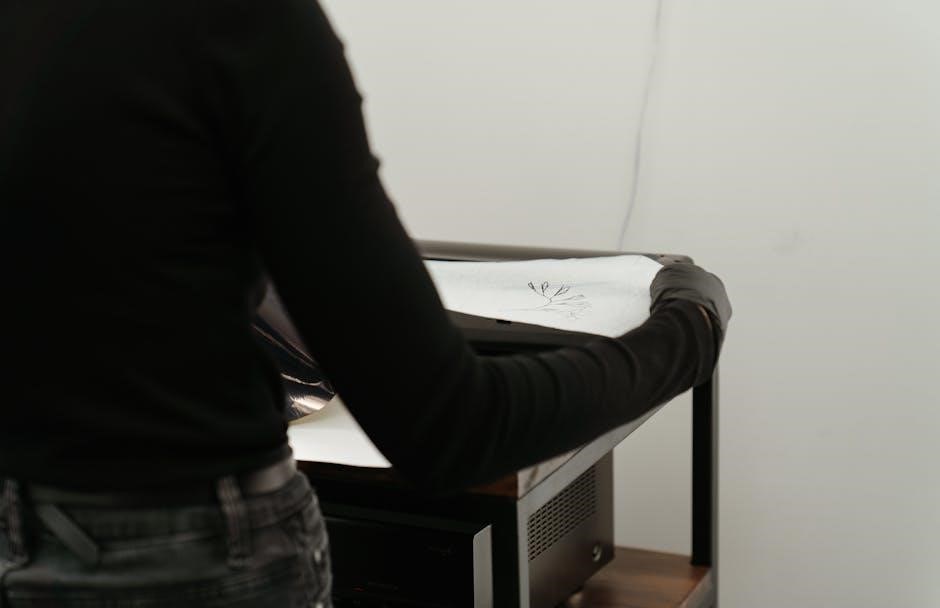
How to Choose the Right Manual Transfer Switch
Factors to Consider
Top Brands and Models

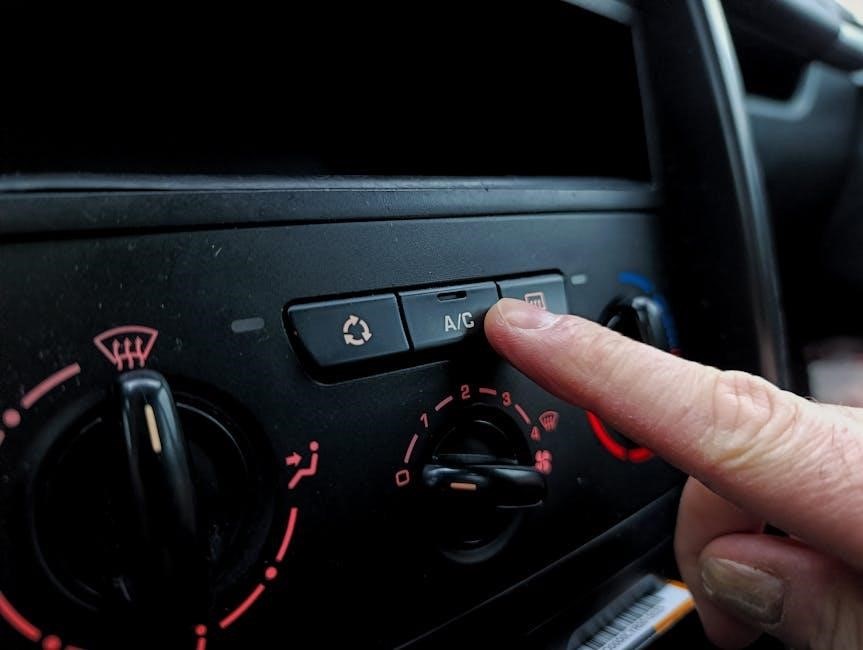
Safety and Compliance
Electrical Safety Standards
Installation and Usage Guidelines

Installation Process
Pre-Installation Requirements
Step-by-Step Installation Guide
Post-Installation Checks
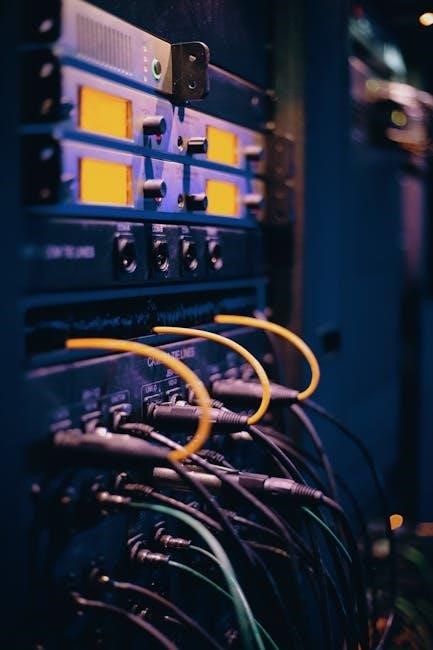
Maintenance and Troubleshooting

Routine Maintenance Tips
Common Issues and Solutions
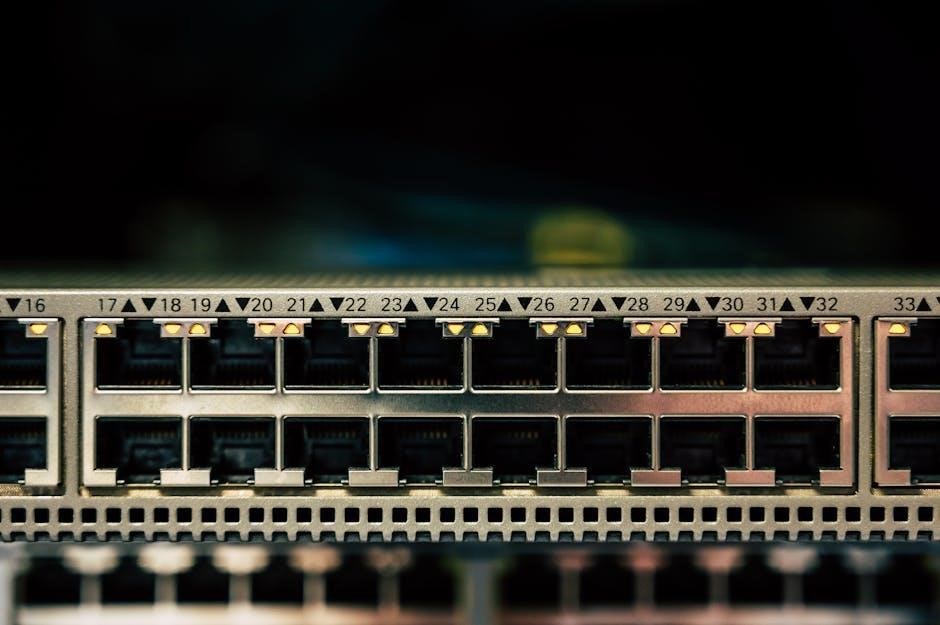
Customer Reviews and Feedback
Product Reviews
Brand Comparisons
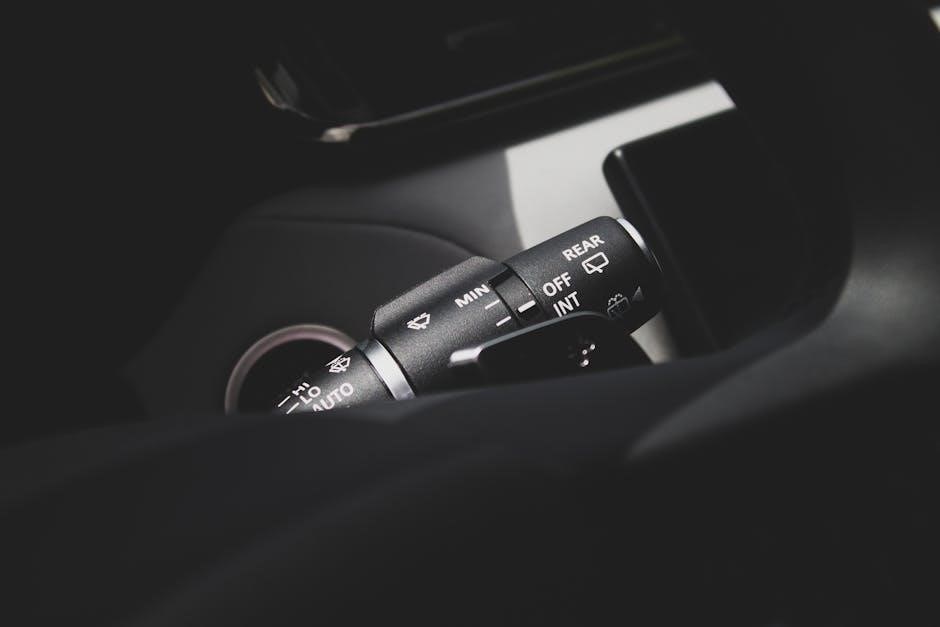
Applications and Benefits
Residential Applications
Commercial Applications
Final Thoughts
Future Trends